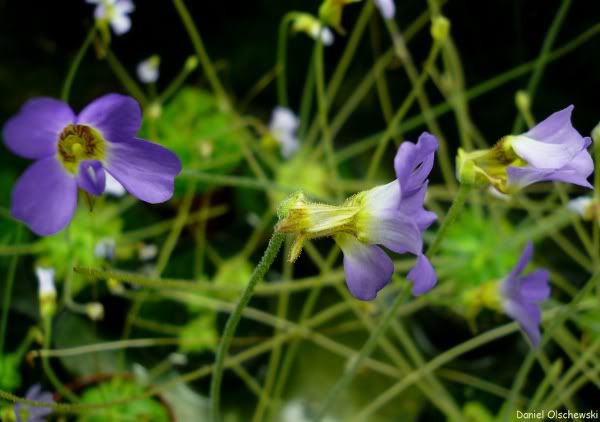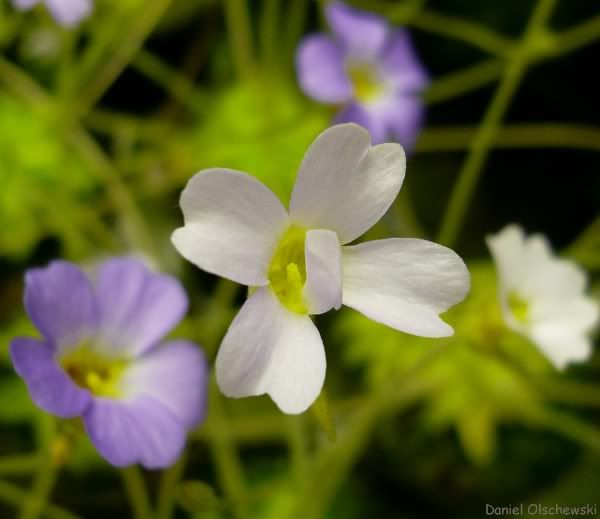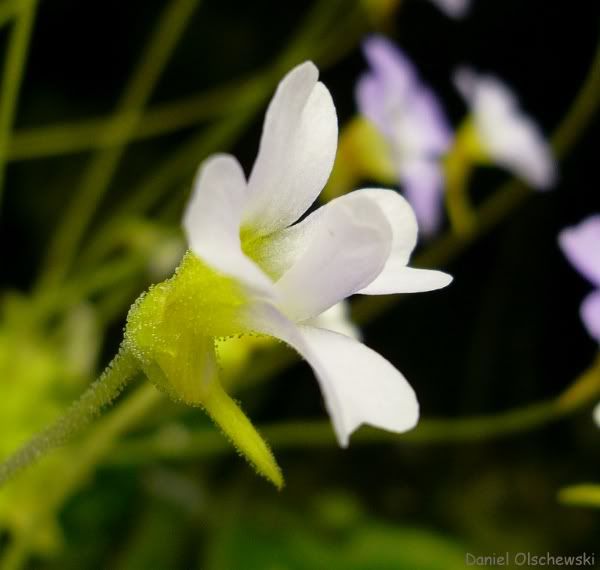|
|
Post by daniel on Apr 13, 2012 23:32:55 GMT -5
|
|
jeff
Forum Member

Posts: 79 
|
Post by jeff on Apr 14, 2012 8:45:03 GMT -5
OH very very nice
jeff
|
|
|
|
Post by daniel on Apr 14, 2012 11:05:37 GMT -5
Many thanks Jeff.  And of course there exist also a lot of mutant flowers, here some examples.     Best regards, Dani |
|
|
|
Post by Brian Barnes on Apr 16, 2012 9:03:22 GMT -5
Hey Dani,
Interesting variation in the colony! Good job! Are those from me? I think so....d**n i'm getting old. ;D
Brian
|
|
|
|
Post by daniel on Apr 16, 2012 16:41:54 GMT -5
Thanks Brian.  Yes, the variation is enormous. I cross pollinated them (a few i selfed as well) and now the next generation grows up. Have you ever seen the yellow flowering form (P. pumila var. bushwelli)? And yes, the seed was yours, many thanks again.  Best regards, Dani |
|
|
|
Post by Brian Barnes on Apr 17, 2012 9:14:30 GMT -5
Hey Dani, Yes, I've seen the yellow flowered form of P. pumila several times 'in situ'. I've tried growing them once and they did poorly for me. I think the trick is to have calciferous soil, which is what they grow in down in South Fl. Interesting. The seed I sent truly was from a white flowered variety. I guess the flower traits aren't too stable....except for in var. buswelli.  Brian |
|
|
|
Post by daniel on Apr 17, 2012 18:33:32 GMT -5
Hi Brian, good to hear that this yellow flowering form still exists in nature. Does it occur in little colonies? Of course i believe you that the seed was from a white flowered variety, anyway one of them was completly white.  Really interesting that the flower traits aren´t stable for P. pumila, why do you think they should be stable for P. pumila var. buswelli. You mean that all P. pumila grow in calciferous soil? Hmmm, i use a dead sphagnum/sand mix without any problems. Best regards, Dani |
|
|
|
Post by Brian Barnes on Apr 18, 2012 14:12:01 GMT -5
Hey Dani, I've only seen var. buswelli (yellow flower) growing in calciferous soils in Big Cypress Preserve in South Fl. (which is the only place they grow). The area has a high dissolved coral content in the soil, which is also called "Oolite". I've often wondered if this attributes to their consistant yellow color. All other typical P. pumila are usually in a sand/deitrus mix 'in situ'...  The typical form of P. pumila must have an unstable gene or something to cause such shape and color diversity amongst same-colonies.  One doesn't see that much flower diversity amongst the other US Pinguicula species. Brian |
|
|
|
Post by daniel on Apr 18, 2012 18:53:56 GMT -5
Hi Brian,
but in this Big Cypress Preserve there also occur plants with another flower colour than yellow, or not?
The minerals inside this calciferous soil could be responsible for a different/stable colour.
In the case of Hydrangea macrophylla and other Hydrangea species it is possible to achive different flower colours (which are stable) depending on the pH and/or different minerals in the substrate.
So indeed the flower colour and/or it´s stability could depend on the kind of soil.
Perhaps it´s worthy to plant them into calciferous soil and look what will happen.
BTW, have you taken pictures of them and their habitat?
Best regards,
Dani
|
|
jeff
Forum Member

Posts: 79 
|
Post by jeff on Apr 19, 2012 4:55:22 GMT -5
Bonjour DANIEL no possibility for me to have P.pumila seeds ?   like P.balcanica with red leaves ?    these pumila mutation are ephemeral ? probably the flower gene A and B actually quite common in this genus. see here the buswelli specie 'in situ'  remark the other , white, on the picture for me it is not a soil reaction but rather a antocyan absence or a chlorophylle problem. not others picture , it's a pity. on caerulea or planifolia you have a lot of colour to white to blue violet jeff |
|
|
|
Post by Brian Barnes on Apr 19, 2012 8:42:00 GMT -5
Hi Dani and Jeff, Actually...yes, there are areas that are more white sand/peat in nature within the Preserve area, where one can find the typical pinkish and purple color variations. BUT...it seems that the yellow flower forms frequent highly calciferous areas, in my opinion. And yes, there are pale yellow/white forms that accompany the yellow forms as well. Unfortunately, I lost the few pics I had of this fantastic variety when my computer crashed a few years back...so thanks Jeff for posting yours!  It does seem that P. pumila shows more variation in petal/stigma morphology and shape than the other Southeast US species, in my opinion. Happy Growing! Brian |
|
|
|
Post by daniel on Apr 19, 2012 23:10:33 GMT -5
Hi Brian and jeff, jeff, thanks for the picture. And no worry, i will send you a mail concerning your wishes.  @brian, thanks for the further explanation. What a pity you have lost the pictures, so you will have to revisit this location and take some nice pictures and......  ;D I have also found some pictures on the photofinder but they only show single plants, here is the link: www.flickr.com/photos/94556645@N00/sets/72157623152717873/It seems so as if the plants are more reddish than the "normal" P. pumila and they do have a nicely red coloured venation or is it only mere chance. Best regards, Dani |
|
jeff
Forum Member

Posts: 79 
|
Post by jeff on Apr 22, 2012 1:32:02 GMT -5
Bonjour an other interessant detail on our twelfth picture , a tube totally violet blue . can you isolate this specimen and make perenity and reprotiuctibility test? nice picture to buswelli DANIEL .many thanks for me the veination are 'normal' but the stem flower colour no , very red or orange , not like on the ' type'. for me is not a soil question , on these picture we see , in a same area white,pink , blue -violet colour , rather a antocyan lack , why ? without antocyan for me the plant take the tube colour here yellow  . it's a pity no possibility without seeds to reproduct the phenomen , and try 2 test : perenity and reproductibility. here in france for lusitanica we have also a variation , but here for me just a sunlight question , with full sun : leaves and "tube" with red veination , with a herb shade green leaves and yellow tub for instant it is my explanation , pending a test 'ex situ' which will be more convincing.. jeff |
|
marcel
Global Moderator   
Posts: 48
|
Post by marcel on Apr 22, 2012 4:03:42 GMT -5
If any of you guys have seeds or plants of the US species to sell, let me know will you? Even the "standard varieties". I have gotten my feet wet with primuliflora and planifolia and would like to expand but plants and seeds are hard to get and I would like to get them from a reliable grower  |
|
|
|
Post by daniel on Apr 22, 2012 14:36:13 GMT -5
No worry Marcel. If you grow P. primuliflora and P. planifolia successful you will not have any problems with the others. For sure i will be able to offer some plants in the near future but also seed of a few of them. Perhaps we can swap something.  Best regards, Daniel |
|